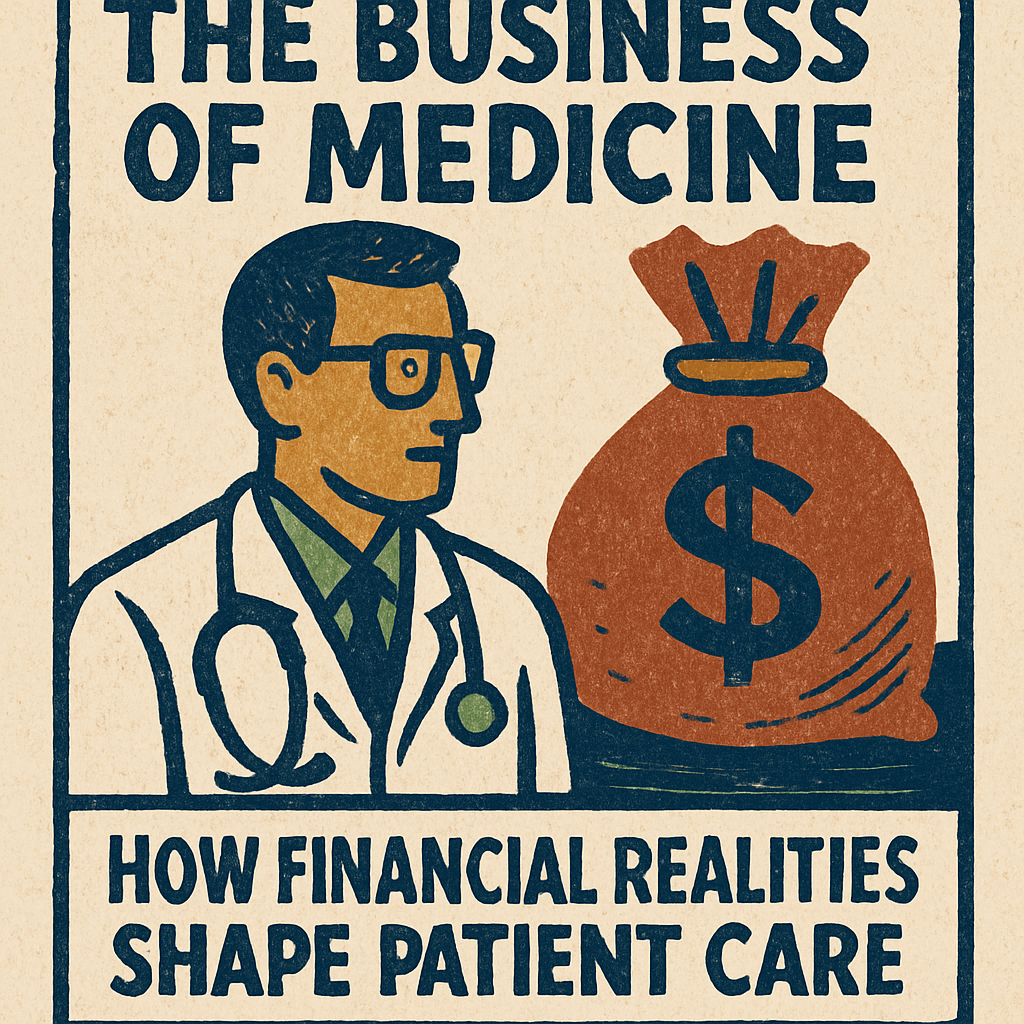
The Business of Medicine: How Financial Realities Shape Patient Care
Doug Jorgensen
March 11, 2025
Introduction: The Side of Healthcare We Don’t Like to Talk About
We like to think of medicine as a purely altruistic pursuit—driven only by the desire to help patients. And while that’s true at its core, there’s another truth that can’t be ignored:
Medicine is also a business, and like any business, it’s influenced by revenue, expenses, and financial pressures.
The sooner we acknowledge this, the better we can design systems that align good business with good medicine.
Why Financial Health Matters for Care Delivery
No matter how committed a physician is to their patients, they can’t keep the lights on without a positive margin.
A financially strained practice may:
- Shorten appointment times to see more patients
- Delay investing in new technology
- Reduce staff or cut back on support services
- Avoid taking lower-reimbursing insurance plans
These decisions have a direct impact on the quality, accessibility, and scope of patient care.
The Payment Landscape
1. Fee-for-Service (FFS)
Providers are paid per visit, test, or procedure—creating incentives for volume but not necessarily for efficiency or outcomes.
2. Value-Based Care
Payment is linked to quality metrics and patient outcomes, which can promote prevention but also requires significant reporting and infrastructure.
3. Capitation Models
A fixed per-patient payment regardless of services used—rewarding efficiency but potentially disincentivizing high-cost interventions.
The payment model a practice operates under will influence:
- Appointment length
- Staffing levels
- The types of services offered
- Which patients a practice can afford to accept
Overhead and Cost Pressures
Running a medical practice means juggling:
- Staff salaries and benefits
- Rent or mortgage payments
- Medical supplies and equipment
- EHR systems and IT support
- Malpractice insurance
- Compliance and regulatory costs
When reimbursement rates stagnate but expenses climb, providers are forced to make difficult choices.
The Private Equity Factor
In recent years, private equity firms have entered healthcare aggressively:
- Buying physician practices and consolidating them into large groups
- Driving cost efficiencies (and sometimes cost-cutting)
- Seeking high returns—often within short investment timelines
While this can inject capital and operational expertise, it also raises concerns about profit being prioritized over patient care.
How Patients Experience the Business Side
Patients may notice:
- Shorter visits
- Higher out-of-pocket costs
- More referrals to in-network providers within corporate systems
- Limited appointment availability
These aren’t necessarily the result of bad intentions—they’re often the byproduct of financial survival strategies.
Aligning Business and Medicine
The challenge is designing systems where doing well financially and doing right by patients are the same thing.
This could mean:
- Incentivizing preventive care
- Rewarding long-term patient health outcomes
- Ensuring fair reimbursement for complex, time-intensive cases
- Encouraging competition without sacrificing quality
Final Thoughts: Transparency Is Key
Patients deserve to understand that the financial structure of medicine isn’t separate from their care—it’s intertwined with it.
When we make those financial incentives transparent, we can start building a system where:
- Providers can thrive financially
- Patients receive consistent, high-quality care
- The “business” of medicine supports, rather than undermines, its mission
Because the best healthcare systems are the ones where the balance sheet and the patient chart are both healthy.
About the Author
Douglas J. Jorgensen, DO, CPC, FAAO, FACOFP
Dr. Doug is a physician, consultant, and national educator on healthcare policy and regulatory compliance. He advises organizations on aligning financial sustainability with quality patient care.


